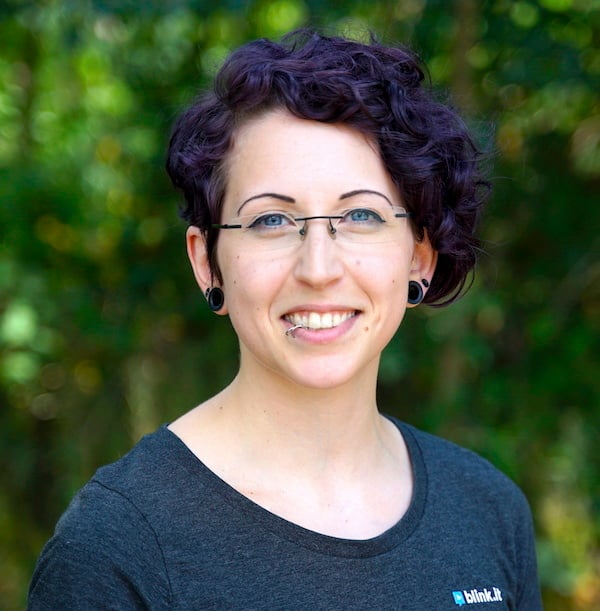Learning from and with each other: It’s an important aspect in company training courses, one that greatly increases learning efficacy among employees. In the following article, we explain why this is so and how you can specifically improve modern online training with social learning.
Social Learning: A focus on interaction
The term itself sounds very modern, but the basic idea behind it is not new. According to the wiki definition, social learning means nothing more than "group work": social interaction is at the core of social learning. Quite simply, we learn together.
This social interaction does not necessarily require a large group: One-on-one coaching is also social learning. The only important thing is that an exchange takes place. We learn with one another.
As I said, this idea is not new: The theory of social learning became popular way back in the 60s with Albert Bandura's Social Learning Theory. This states that learning is not a passive assimilation of information, but depends on social contexts. We learn primarily by observing the behavior of others. We learn from one another.
Social learning means learning together, with and from each other.
Why social learning is important in training: 70-20-10
On its own, of course, social learning is difficult to apply: It lacks theoretical knowledge and practical application. This has given rise to a rule that is often used in training, and you've probably heard it before: The 70-20-10 rule.
With reference to training, the 70-20-10 rule states:
- 10% of learning comes from pure knowledge, such as that delivered in training courses.
- 20% of learning comes from social learning: interaction with others.
- 70% of learning is "learning by doing", i.e. practical application in the workplace.
 Social learning thus accounts for (at least) 20% of all learning. If you ignore social learning when planning training, the learning effect on the learners – your employees – will be reduced enormously.
Social learning thus accounts for (at least) 20% of all learning. If you ignore social learning when planning training, the learning effect on the learners – your employees – will be reduced enormously.
Social learning can also facilitate practical application (70%): When employees can observe certain behaviors or processes in others, they find it much easier to emulate them in the workplace.
Social learning in online training
Social learning in classic training courses is not difficult: Face-to-face instruction in groups, active participation and group discussions are an integral part of most company training courses.
Today, the trend is strongly toward online training, thanks to digitalization. More and more companies are using online training to provide employees with continuing education independent of time and location. Blended learning is becoming particularly important: the mixture of face-to-face and online learning will be the most important form of learning for the next few years.
 Want to learn more about blended learning? Then check out our new info page on blended learning in practice!
Want to learn more about blended learning? Then check out our new info page on blended learning in practice! 
3 examples for social learning in online trainings
You can also easily enable social learning in online training and thus improve the learning effect for your employees. The following three examples show you how you can use social learning in eLearning or blended learning:
1. Start discussion boards
eLearning: A comment area is now a standard feature on modern online learning platforms. Use this feature for group discussions! For example, ask questions about relevant learning content and encourage your employees to engage in virtual discussions.
Blended learning: For blended learning, you can initiate discussion topics in the online course and start the actual group discussions in a face-to-face meeting. This allows all learners to contribute their experiences and benefit from the knowledge of others, increasing the learning effect for everyone.

Example: This is how social learning can succeed via a comment function in online learning. Source: blink.it learning platform
2. Enable file sharing
eLearning: Social learning requires that all learners can exchange information with each other about content and learning status. In an online course, this is readily achieved via a comment function, for one thing. For another, learners should also be able to share files with each other and thus actively participate in the course.
Blended learning: The classic "Please bring your results to the next training day" becomes "Please upload your results to the course". In a face-to-face meeting, for example, groups are formed and tasks are distributed, the results of which employees later flexibly upload to the accompanying online course.
3. Learning by example with videos
eLearning: One focus in the "Social Learning Theory" is learning by example. You can definitely take advantage of this in online training: In videos, for example, employees can observe situations from their everyday work or work processes. Let’s say, in a training course for sales employees, a perfect negotiation meeting can serve as an example video – and encourage imitation.
Blended learning: To increase learning efficacy with videos, you can create them yourself in the classroom seminar. You can easily film short videos with your smartphone and upload them later in the online course. In addition, you can combine videos with a comment function: Filmed situations can also be the impetus for a group discussion. YouTube has been proving for years how good videos are at stimulating discussion!

Example: With learning videos you can convey knowledge easily, demonstrate processes and tasks and motivate learners to imitate them. In this example, the trainer explains important aspects for everyday exercises after a live training. Source: blink.it learning platform
Conclusion: Social learning is worth it for companies
These examples show how easy it is to implement social learning in online training. However, learning through social interaction not only increases the learning effect for the individual: Social learning also promotes collaboration among employees. In addition, social involvement strengthens the sense of responsibility, which motivates employees to actively participate in important training courses.
The prerequisite for good social learning in companies is choosing the right learning platform for your online courses. A comment function, an upload option for learners and videos as learning content – these form the basis for social learning. You’ll find them all on the blink.it learning platform, for example. Test blink.it now free of charge and without obligation for your company!












